Tour the stunning Santa Barbara Mission, overlooking the Pacific Ocean.
The Santa Barbara Mission was established in 1786. It was the tenth of 21 missions founded by the Spanish Franciscans in Alta California between 1769 to 1833, known as the Queen of the California Missions due to its stunning, Greco-Roman architecture.
The goal of the California Missions was was to convert Native Americans to Christianity and colonize Alta California.
10 best things to do at Santa Barbara Mission
1. Stand beneath the gorgeous church facade.
I started in the front lawned area of the Santa Barbara Mission, in awe of the stunning church facade with two bell towers. The scene was perfect, with the majestic Santa Ynez Mountains in the background. I looked closer at the Greco-Roman church facade, surrounded by walls six feet thick. The inspiration for this church came from a handbook by ancient Roman architect, Vitruvius Pollio.
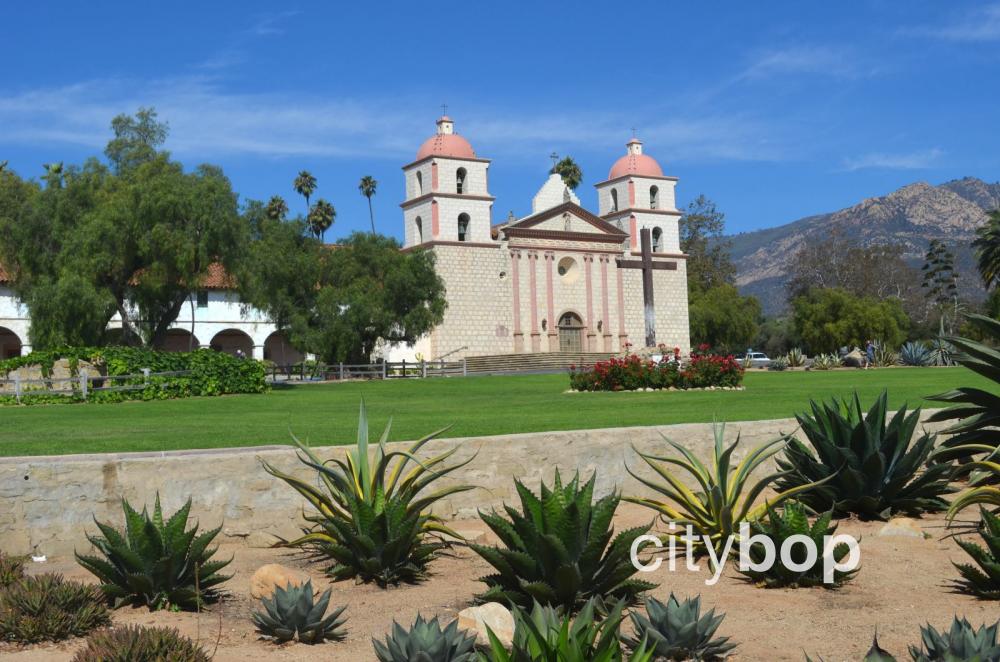
As I admired the church, I realized I was looking at the fourth version of it. The church was built four times, expanding its footprint each time. I tried to imagine the first version from 1786, which was just a simple log building with a grass roof. The second version was made in 1788, using adobe brick and roof tiles. I then learned that the third and fourth versions had to be built after the 1812 and 1925 earthquakes. I wonder how well this building would fare in a big earthquake today.
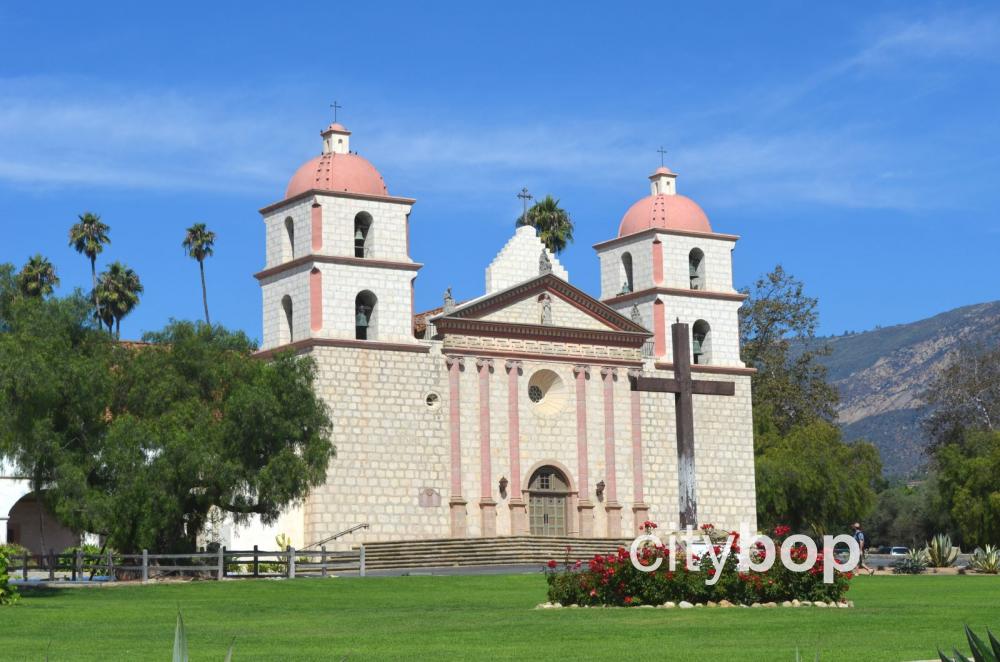
Santa Barbara Mission has the distinction of being the only California Mission to have double bell towers. I counted a total of 6 bells in each tower, and apparently each bell is dedicated to a saint. Back in the day, the bells would be rung to call everyone to work.
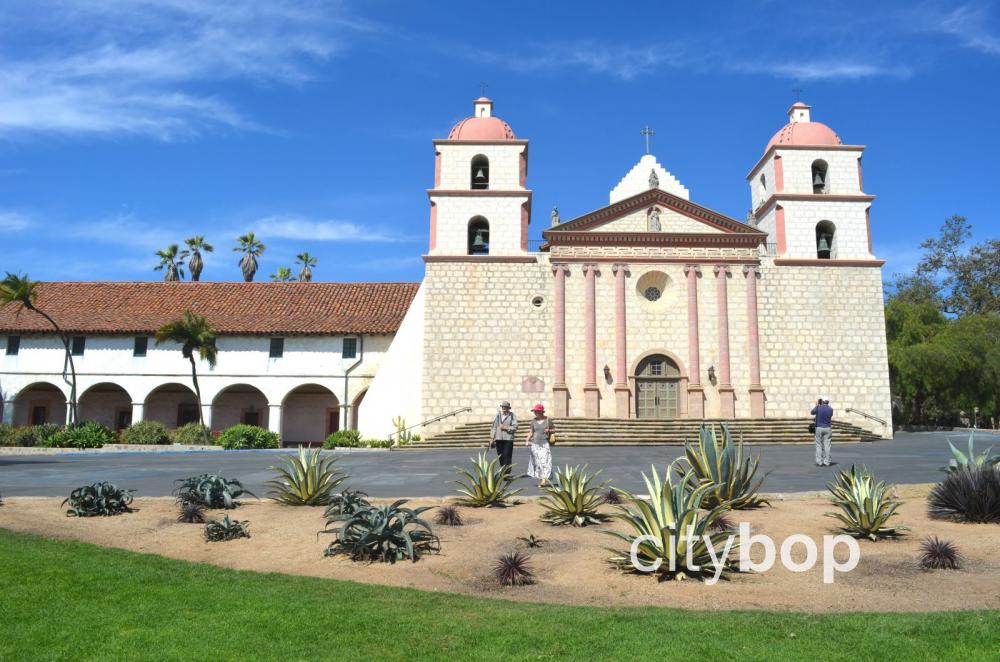
It's easy to miss the details on the facade of the Santa Barbara Mission's church, so don't forget to look up at the triangular pediment to see the statutes of Faith, Hope and Charity. The statue of Santa Barbara is directly below. Santa Barbara was apparently beheaded by her pagan father, after she converted to Christianity.
2. Stop by the Father Serra Statue, and moorish fountain.
I noticed Father Junipero Serra's statue, just near the museum entrance. This Spanish-Catholic priest is credited with establishing 9 out of the 21 missions in California, including the Santa Barbara Mission. A moorish fountain also caught my attention, that flowed into a large trough (Lavenderia), where clothes were washed by Chumash women. I had previously visited the Santa Barbara Botanic Garden which was the start of a sophisticated aqueduct system at Mission Creek, that ended at the trough.
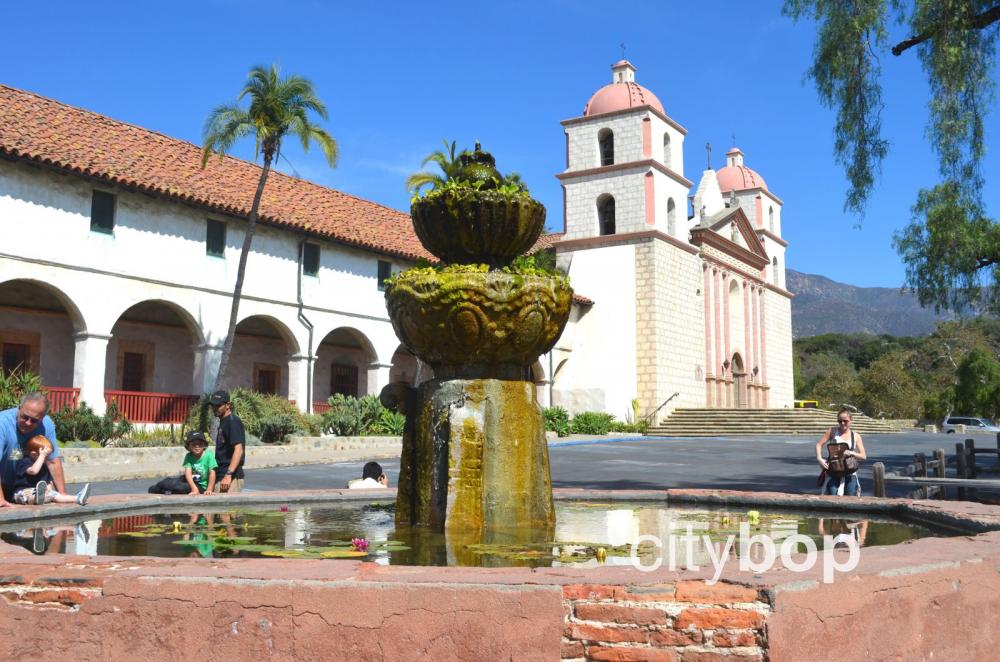
3. Browse the nine-room Museum with historic artifacts.
I discovered that nine of the original rooms from the Santa Barbara Mission had been converted into exhibit rooms. I found these exhibition rooms directly past the gift shop. There's a lot to see here, including three statues from the church facade that were damaged by the 1925 earthquake. The Altar Room enabled me to experience the interior of the Mission Church as it would have looked between 1820 to 1925. There's also a typical bedroom and kitchen from the mission era. Another exhibit provides an overview of the mission trades, like carpenters and farmers, and the Chumash tribe's art and culture.
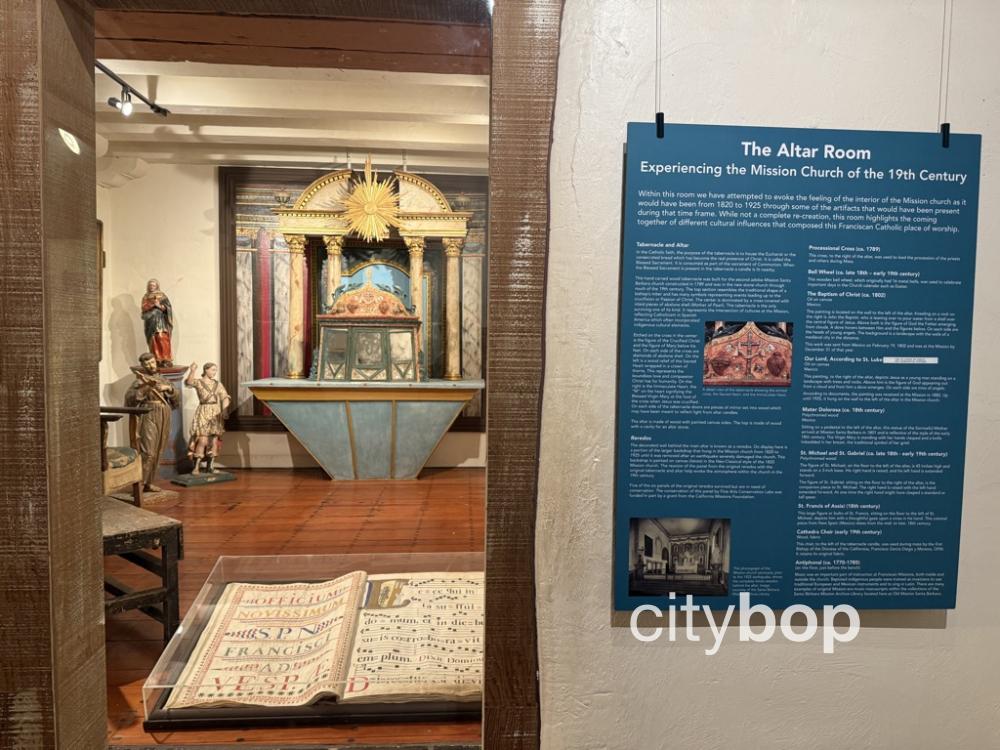


4. See the stunning church interior.
When I entered the church at the Santa Barbara Mission, my attention was focused on the ornate altar with a crypt beneath it.
.jpg)
The Mexican Art from the 18th Century caught my eye, with two of the biggest paintings out of the entire Californian mission chain.

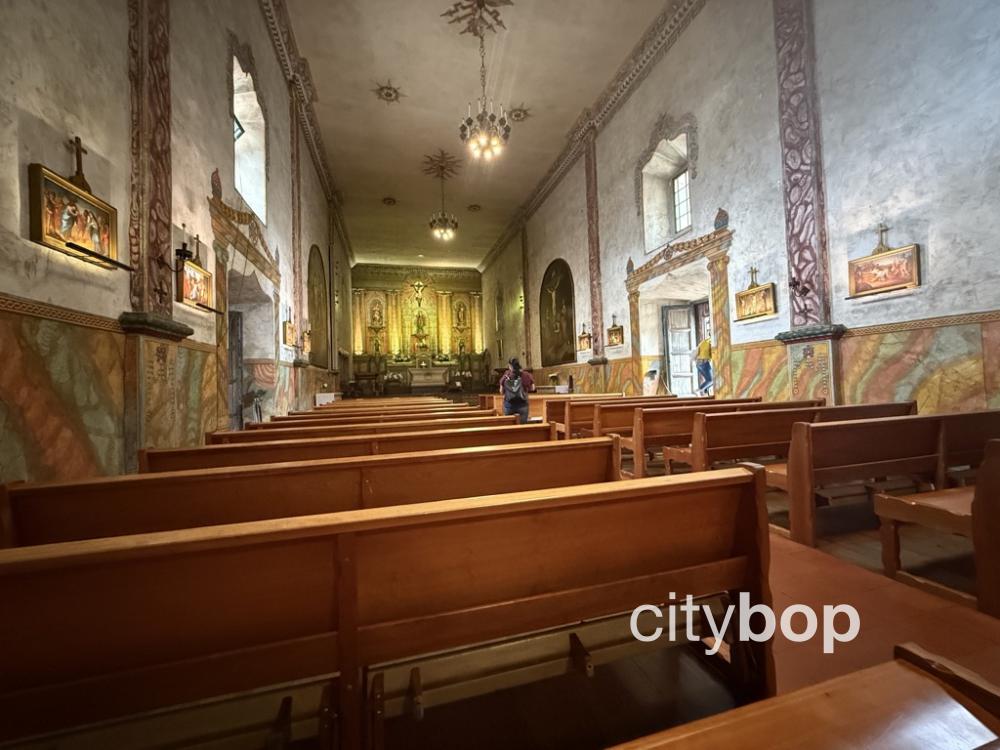
5. Stroll through the Sacred Garden.
The lush garden is another highlight of the Santa Barbara Mission, directly outside the church.
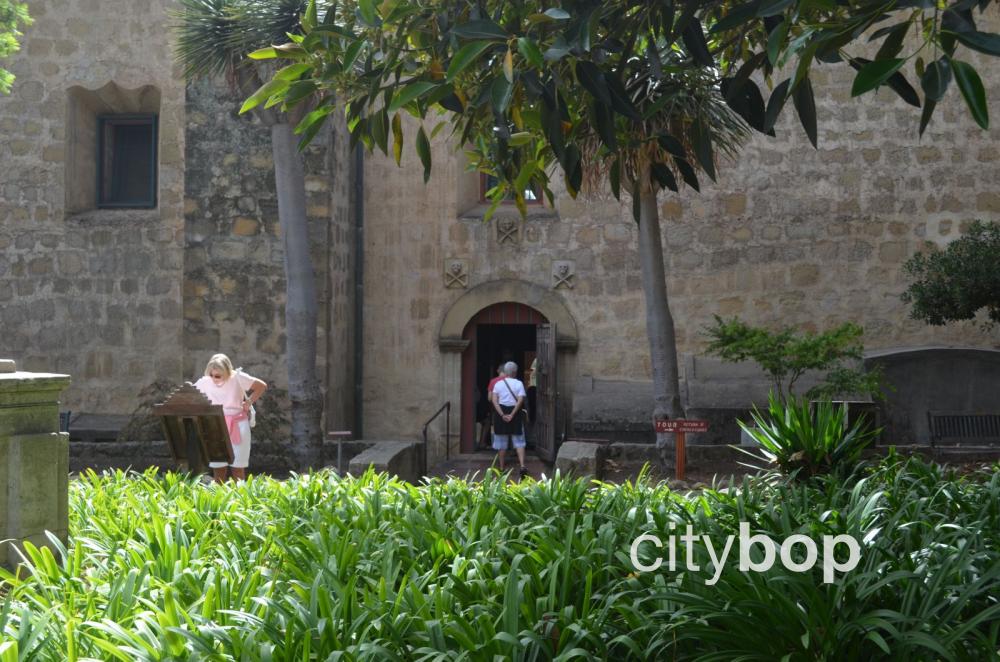
I was intrigued by the cross and bones above the rear door of the church. Apparently this is a Spanish symbol that communicates a cemetery is nearby. In this case, it's just steps away.
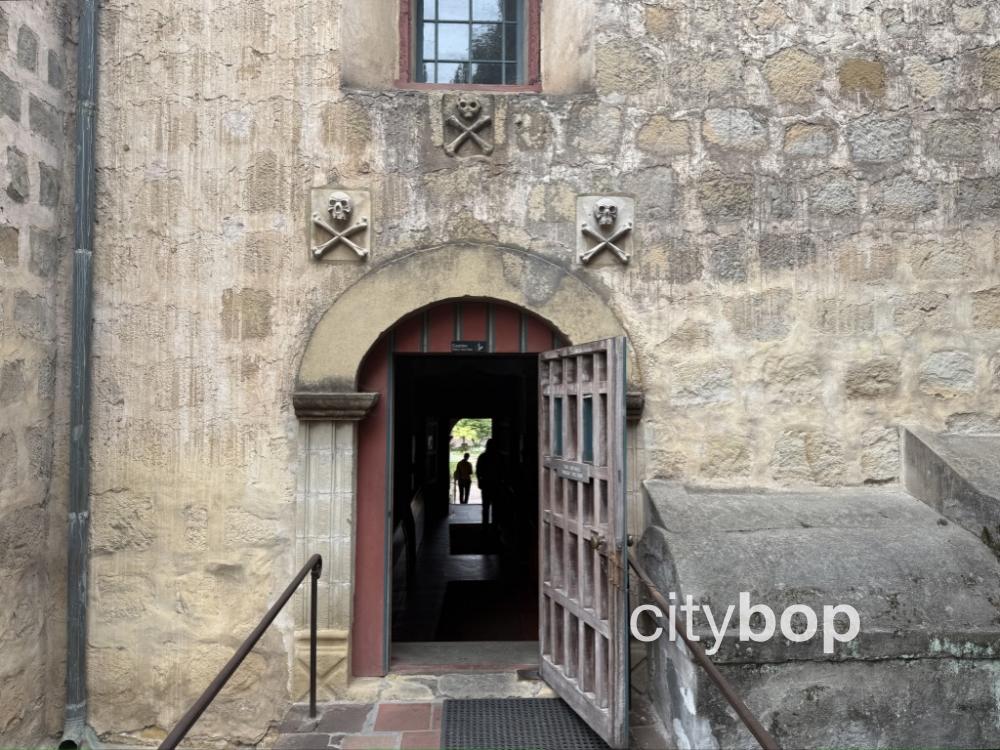
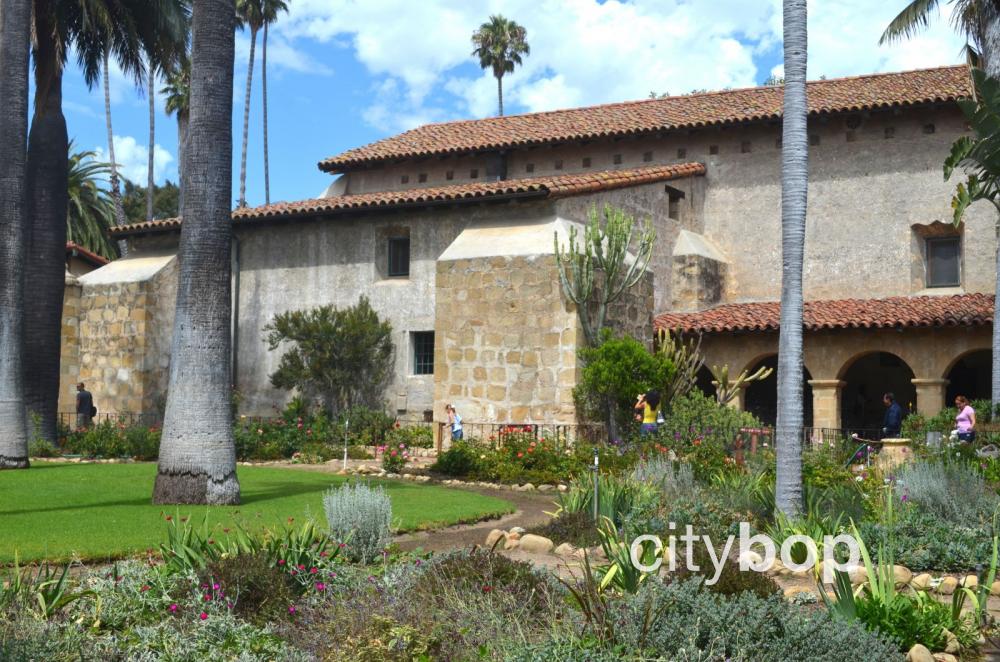
I tried to imagine the garden outside the church in the late 1700s and early 1800s, full of Indians learning important trades like pottery, weaving and leatherwork to earn income for the Santa Barbara Mission.

It's amazing to see plants and trees over 200 years old from the Mission era (1769 - 1836). I wish I had booked a proper tour of the La Huerta Gardens to learn more about these fruit trees, including olives, guava, prickly pear, bananas and citrus trees.
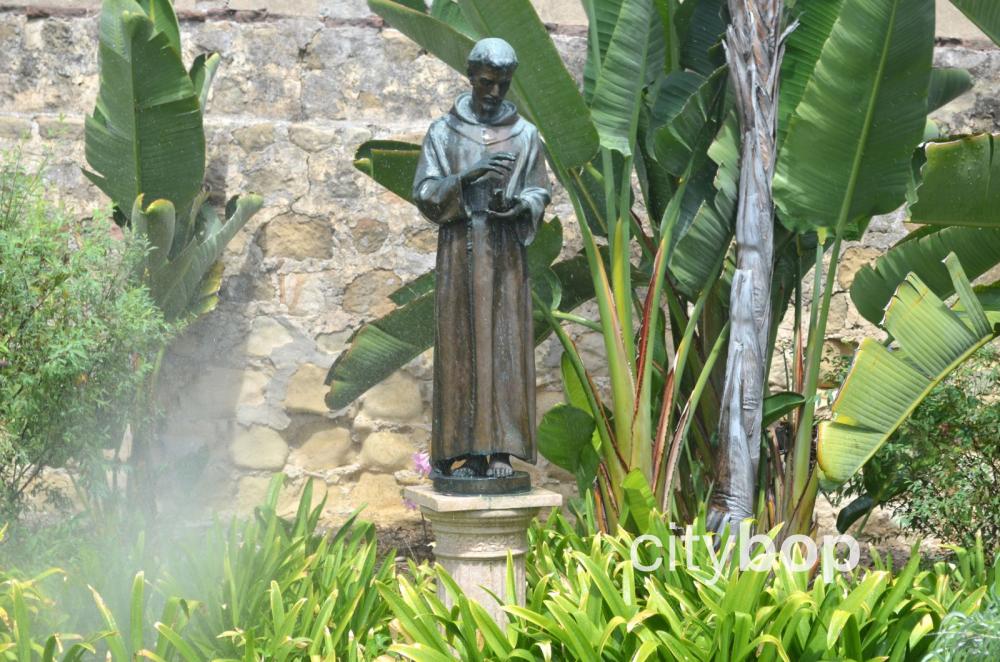
This solemn figure is a statue of St Francis of Assisi.
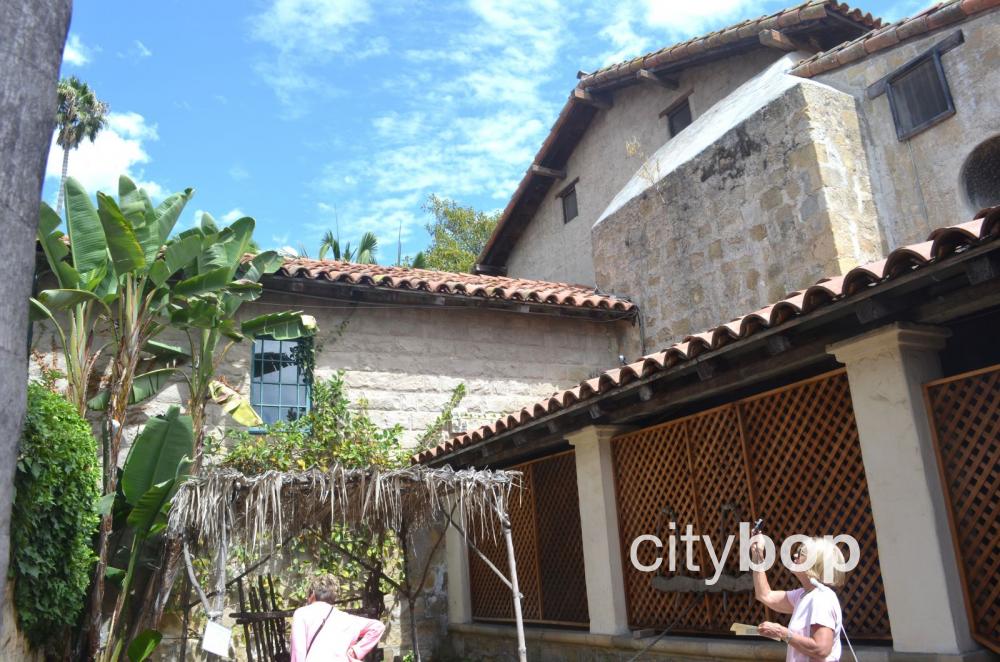
6. Examine the crypts and tombstones at the Historic Cemetery
The cemetery was built after the Santa Barbara Mission church, and constructed in 1789.
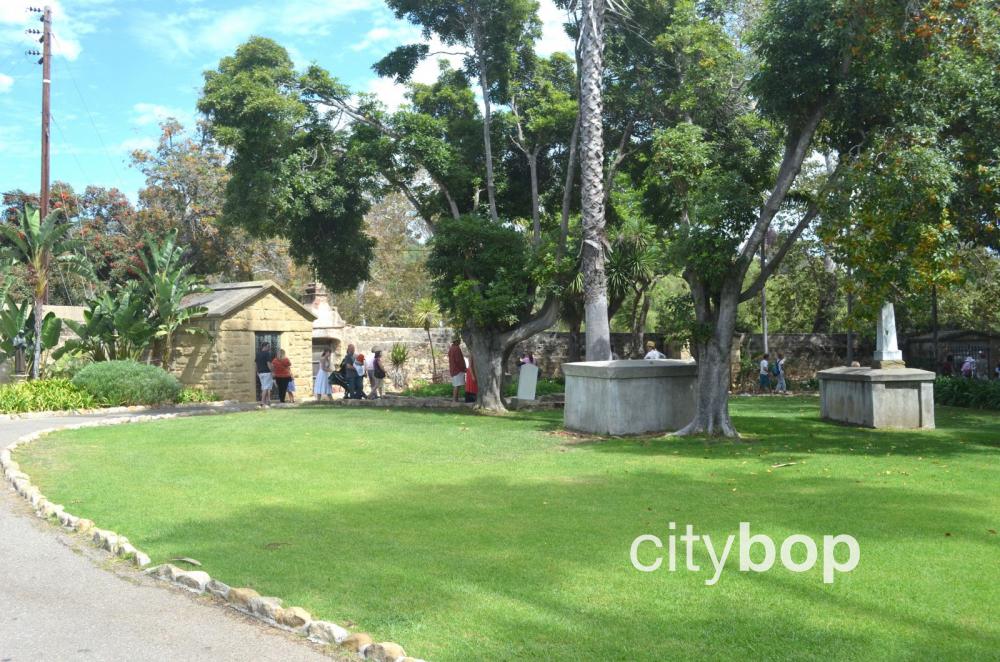
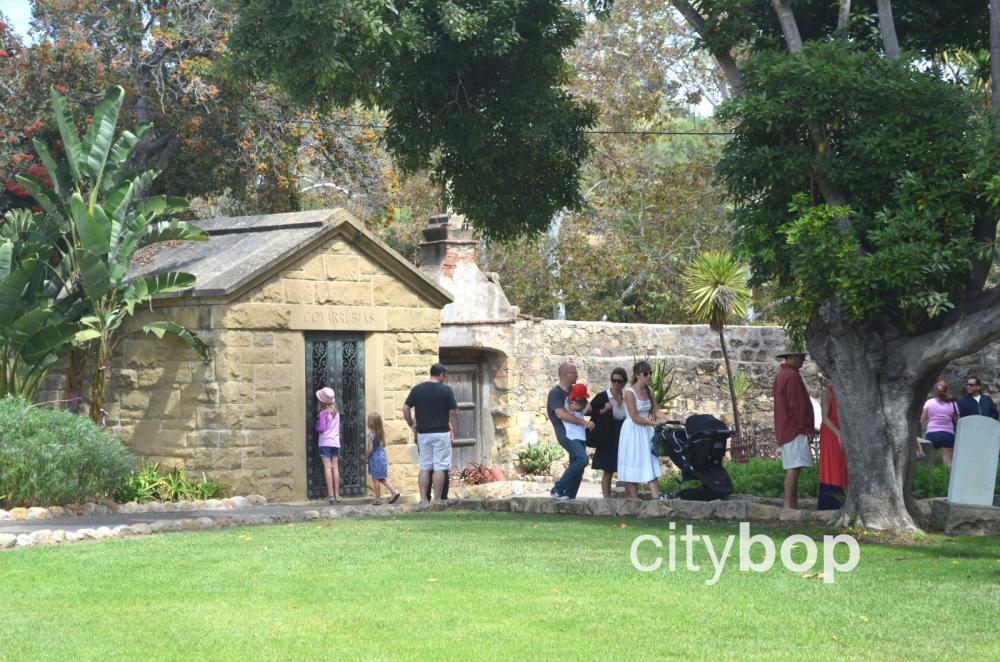
I was intrigued by all the masoleums along the pathway, containing the buried remains of Franciscan priests and early Spanish families of note.
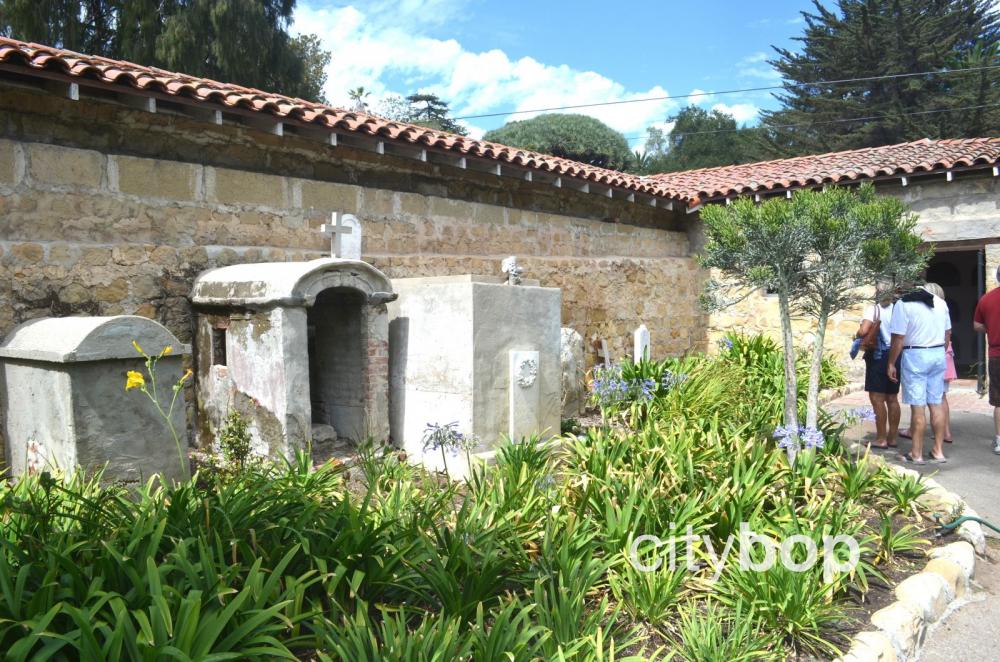

I found this beautiful corner of the garden with a gate and sandstone wall. Much of the mortar has eroded from the wall, and the tilted gate no longer opens.
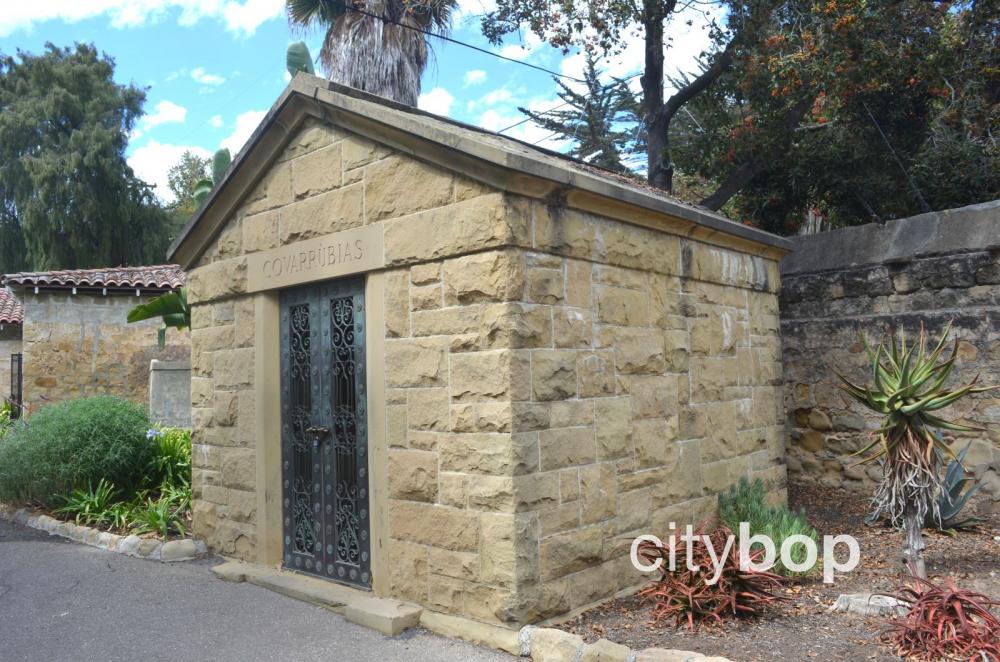
This nicely preserved mausoleum is for the Covarrubias family. Many early Santa Barbara families came from around the world, like french national Covarrubius. He settled in California in 1834, and had a notable career as a Santa Barbara County judge.
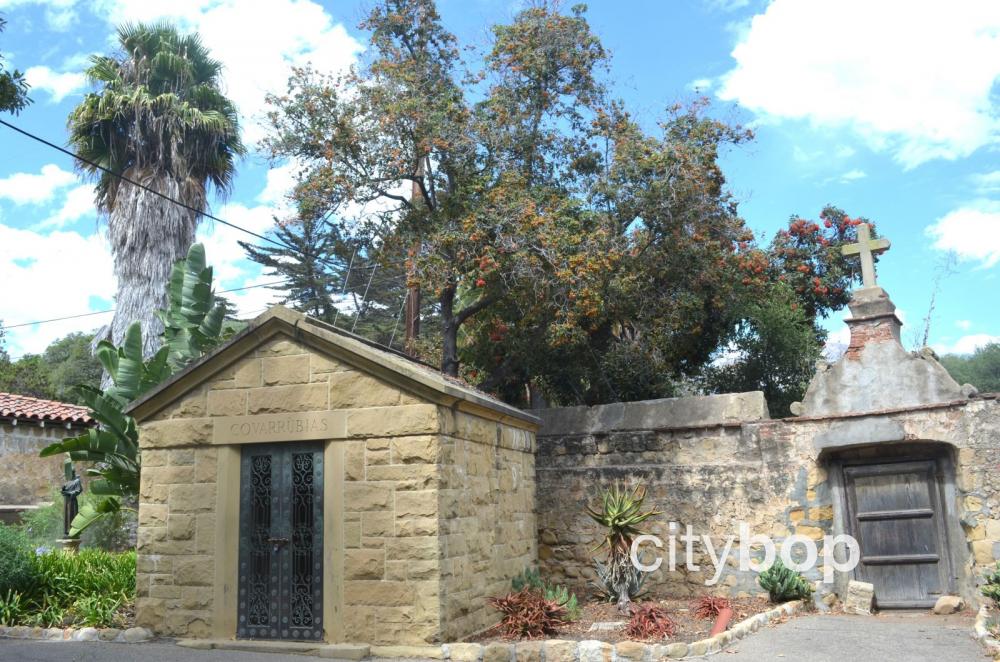

The translation for this Spanish inscription above this mausoleum reads "I want to rest with the ones I love so much."
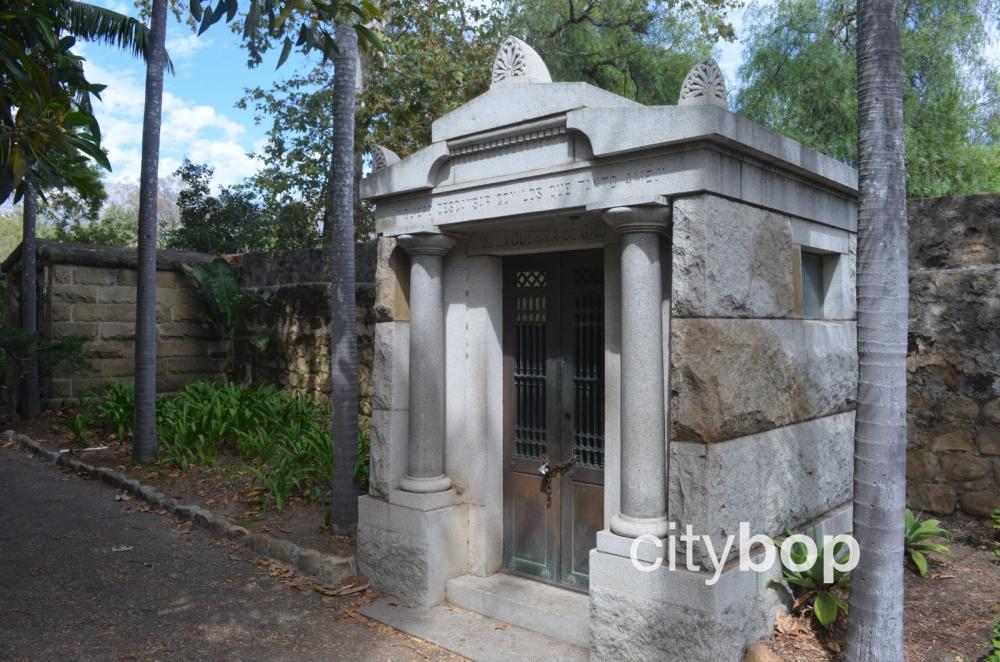
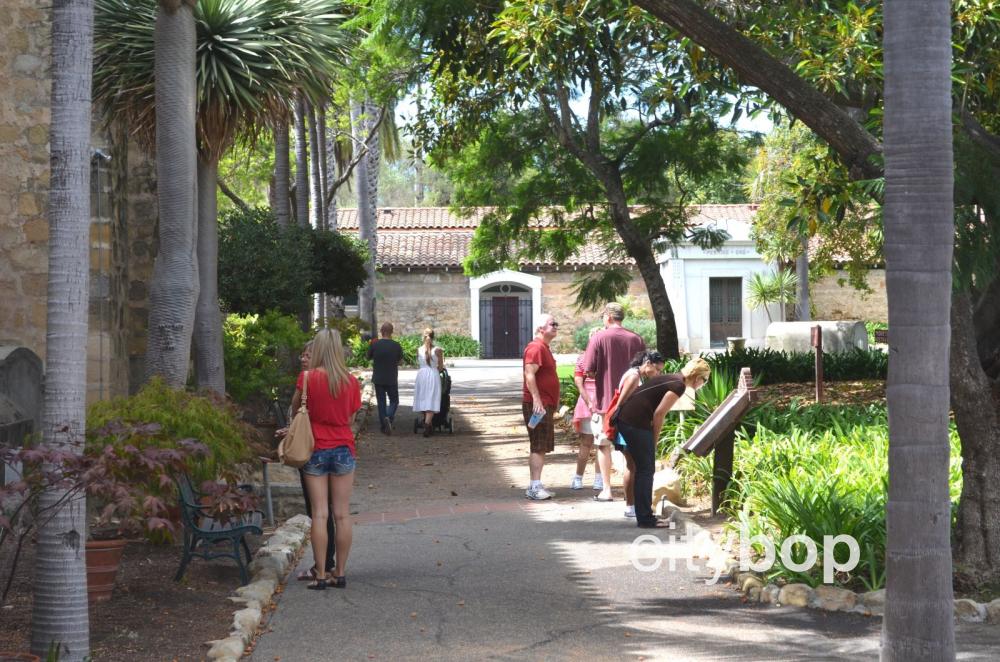
It's easy to skip over the fact that there are literally thousands of unmarked graves here for Chumash Indians. Infact, the estimate is as high as 4,000 graves.
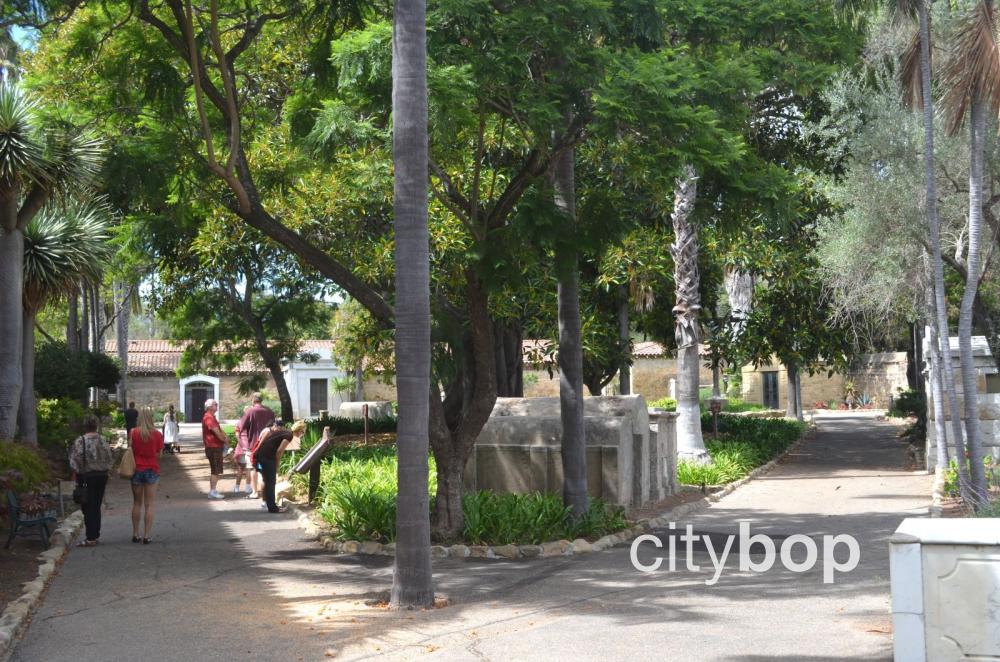
7. Step inside the Historic Mausoleum.
The beautiful mausoleum is tucked away in a corner of the graveyard, and was built in 1878. I was able to peer down the long hallway, and see niches with the remains of nuns, priests and lay people. A more modern addition is the columbarium, where the general public can have their ashes interred.


8. Browse the gift shop.
I saved the gift shop for the end of my self guided tour of the Santa Barbara. It was full of religious themed gifts like prayer cards, statues, jewelry, books and so much more.
9. Book a docent guided tour.
The best way to see the Santa Barbara Mission, is with a docent guided tour. This provides a more indepth understanding of the history of the cemetery, church, nine room museum, and gardens.
10. Visit the incredible library at the Santa Barbara Mission.
I was very impressed by the incredible library collection at the Santa Barbara Mission. Everything you need to know is here about the history of the Franciscan Missions in California, including 16,000 rare and precious books, and lots of artifacts and documents. The highlights is the 1488 edition of the Imitation of Christ.
Know before you go
- Address: 2201 Laguna St, Santa Barbara, CA 93105.
- Parking: free.
- Restrooms: yes.
- Hours & admission: check here.
- Tours: check here. Tour the church, nine exhibit rooms, a cemetery, garden, mausoleum, and gift shop.
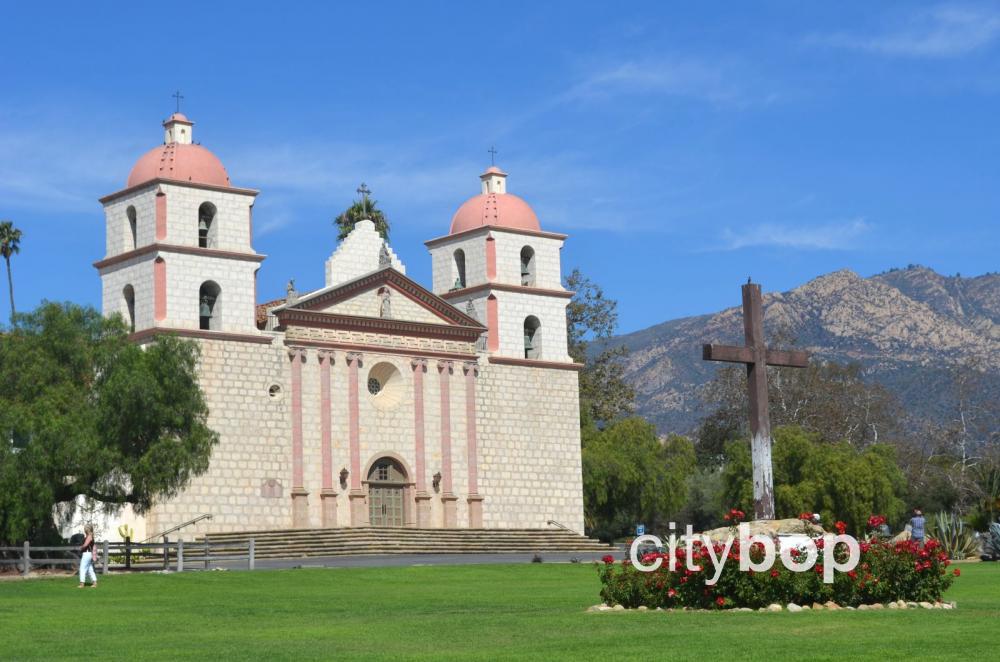

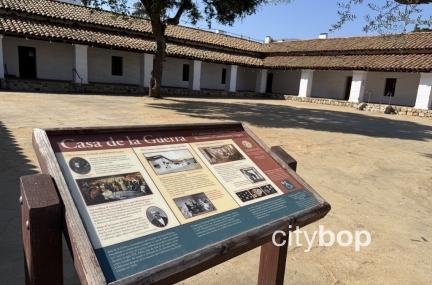
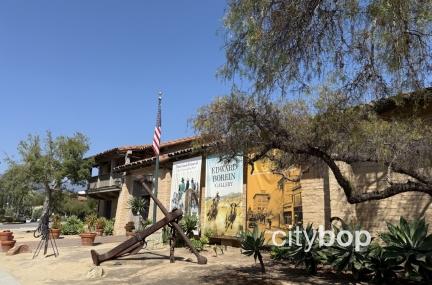


Review this attraction